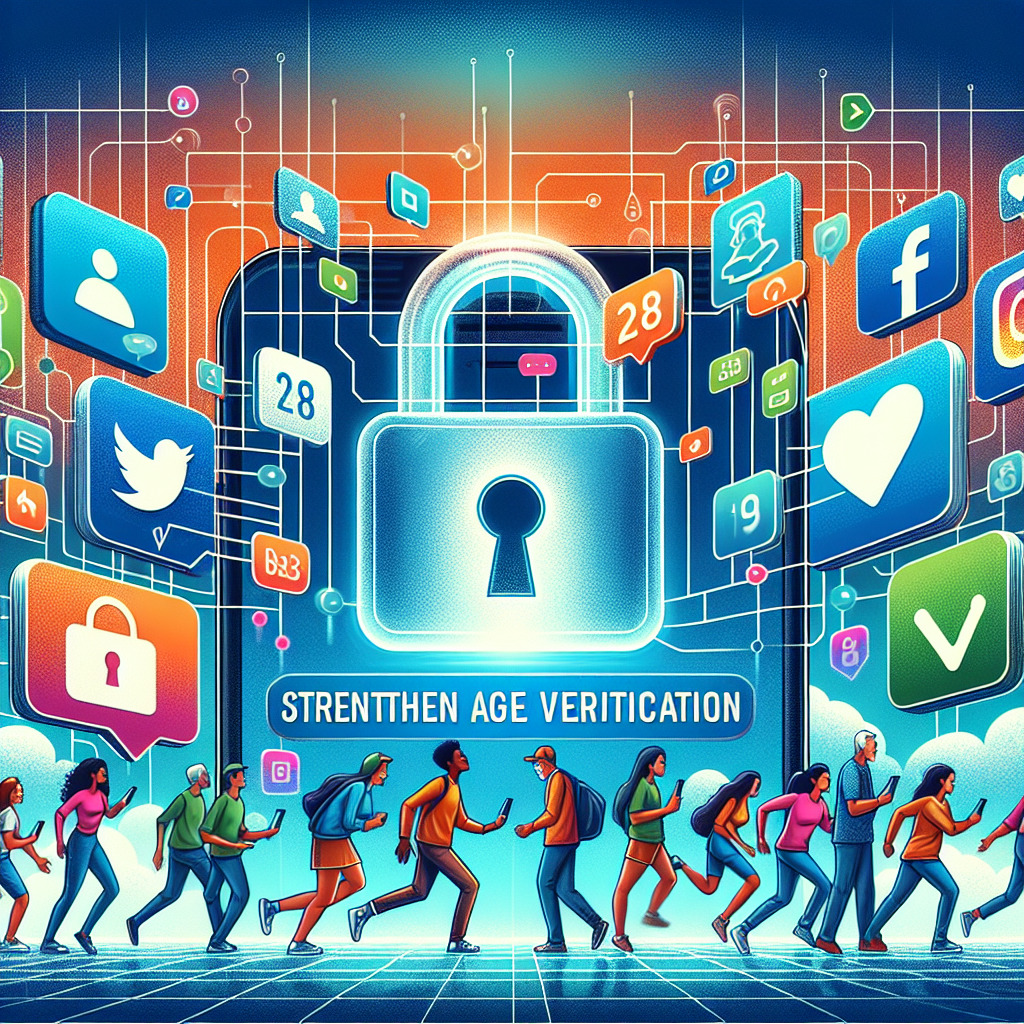Key Takeaways
The Call for Stronger Age Verification
In an era where digital interaction forms the backbone of social engagement, ensuring the safety of users—especially the younger audience—has become a pressing issue. Many experts and organizations are now advocating for social media platforms to enhance their age verification measures. This clarion call isn’t just a precautionary measure; it’s essential to safeguarding vulnerable audiences from potential online risks.
Understanding the Present Scenario
Social media platforms like Facebook, Instagram, TikTok, and others have become integral to daily communication. However, concerns about the safety and privacy of young users on these platforms are mounting. Although most platforms have age limits, typically requiring users to be at least 13 years old, the current verification systems are easily bypassed by tech-savvy youngsters.
Companies typically rely on self-declared age information provided during sign-up. This method is fraught with loopholes, allowing underage users to access content and interactions meant for older audiences. The lack of stringent verification processes creates an environment where minors could be exposed to inappropriate content, cyberbullying, and potentially harmful interactions.
The Push Toward Better Security
The recent uproar surrounding the need for more stringent age verification measures on social media stems from several high-profile cases and studies pointing out the potential dangers lurking online. Advocacy groups highlight that enhanced age verification systems are crucial to creating a safer digital environment.
Experts suggest that platforms should work towards implementing advanced technologies capable of authenticating users’ age more reliably. Biometric identification, artificial intelligence (AI)-based analysis, and identity verification via government-issued identification are some avenues worth exploring.
Why Advanced Verification Measures Matter
1. Protecting Young Minds: By ensuring that only age-appropriate users access certain areas of a platform, social media companies can significantly reduce the risk of exposing minors to psychologically harmful content.
2. Limiting Cyberbullying: Creating safe online spaces where users are truly among peers can help mitigate the occurrence and impact of cyberbullying, which disproportionately affects younger users.
3. Enhancing Trust: As social media platforms face growing scrutiny, implementing effective age verification can bolster trust among users and regulators, ensuring long-term viability.
Pioneering Solutions in Age Verification
Biometric Verification: Biometric technologies offer a promising solution for age verification. Through analysis of facial features or voice recognition, platforms can effectively gauge a user’s age range—although implementation cost and privacy concerns remain a hurdle.
AI-Based Tools: AI can scan public data and detect age inconsistencies in a user’s public interactions and posts. While this method is indirect, it adds another layer of credibility to user information.
Third-Party Verification Services: Collaborating with third-party verification services that specialize in validating personal information can provide a more foolproof age verification system.
Government ID Verification: Although controversial due to privacy issues, requiring users to verify their age using identification documents could serve as a robust deterrent against underage sign-ups.
Stakeholders Responsibility
Both social media platforms and policymakers have roles to play in strengthening age verification mechanisms. Innovating verification technologies requires investment and willingness from tech companies. Simultaneously, policymakers must craft laws that balance user privacy with effective verification demands.
Parents and guardians, too, share the responsibility of staying informed and proactive. They should educate young users about online safety and the importance of honesty when signing up for online services.
Overccoming Challenges
While the push for better age verification is warranted, challenges need addressing for successful implementation:
– Privacy Concerns: Any verification method must ensure user data protection. Platforms need transparent policies to handle personal information responsibly.
– Technological Barriers: Implementing cutting-edge verification technology will require considerable resources and sometimes overhaul existing systems.
– User Experience: Crafting a balance between strict age verification and seamless user experience is crucial. Overly complex processes might deter legitimate users.
The Road Ahead
Enhancing age verification measures on social media isn’t just an option—it’s becoming a necessity. Implementing robust verification mechanisms will not only protect young users but also ensure the sustained trust and integrity on these platforms.
Ultimately, the issue of age verification involves collaboration across various sectors, calling for comprehensive solutions that embrace technological advancements while safeguarding fundamental privacy rights. By gearing toward this balanced approach, social media platforms can set the foundation for a safer and more inclusive digital future.
In conclusion, as the digital sphere continues to evolve, social media platforms must evolve their safety measures, maintaining a proactive stance to protect users and nurture a healthier online ecosystem. Effective age verification systems are a crucial step in this direction, paving the way for an accessible yet secure digital realm for all.

